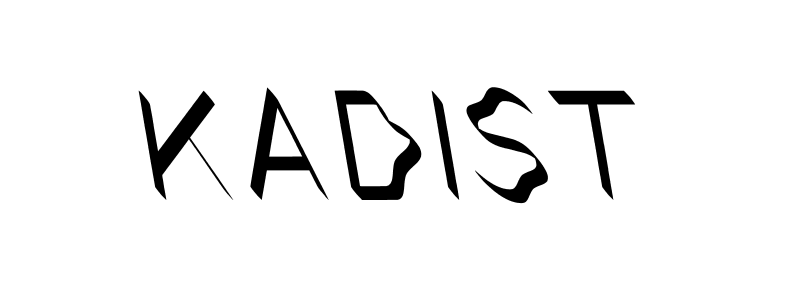Empire's Borders II-Passage
2010 - Photography (Photography)
174H x 105W centimeters
Chen Chieh-Jen
Empire’s Borders II – Passage and Empire’s Borders II – Workers are from the three-channel film installation Empire’s Borders II – Western Enterprise, Inc. (2010), which takes as its point of departure the political context of the 1950s and the Cold War, when American interests in Taiwan overlapped with the Chinese civil war. Cooperating with the Chinese Kuomintang, the American CIA established something called Western Enterprises, an agency whose main tasks included training an anti-Communist National Salvation Army (NSA) for a surprise attack on Communists in mainland China and establishing Taiwan as a base for anti-Communist operations in Southeast Asia. Narrated from the point of the view of the artist’s father, once a member of the NSA, the project interweaves personal experience with historical events. The restaged ruins of the old Western Enterprise base have a haunting atmosphere, silently recounting the complex history of Taiwanese-American relations in an era of global tensions and conflicts.
One of the most established artists working in Taiwan today, Chen Chieh-Jen creates highly politically charged works that are deeply rooted in his homeland, examining the modern history of Taiwan within the larger context of globalization. Through the visual language of video and photography, he explores collective memories, perceptions, and historical constructions that are closely related to the recent rise of neoliberalism. The work resists the existing “logic” of history writing by looking into past events in depth. It also imagines and proposes new forms of history with democratic potential—histories that counter official ideologies and are actually written by the people.
Colors:
Related works featuring themes of: » Cinematic, » Collective History, » Contemporary Participation, » Chinese

© » KADIST
Claudia Joskowicz
2014Los rastreadores is a two-channel video by Claudia Joskowicz narrating the story of a fictitious drug lord, Ernesto Suarez, whose character is based on the well-known Bolivian drug dealer, Roberto Suárez...

© » KADIST
Claudia Joskowicz
2008The primary interest in the trilogy is Joskowicz’s use of cinematic space, with long tracking shots that portray resistance to habitual viewing experiences of film and television...

© » KADIST
Tino Sehgal
2004Tino Sehgal’s This Exhibition requires an interpreter (in this particular piece, a gallery attendant) to faux faint each and every time a visitor enters into a given space...

© » KADIST
Harrell Fletcher
2005The American War , which takes its title from the Vietnamese term for what Americans call the Vietnam War, has toured the United States extensively with the goal of presenting a Vietnamese perspective of that history...

© » KADIST
Chen Shaoxiong
2006After engaging primarily with video and photography for more than a decade, Chen turned to painting to explore the issue of urban change and memories—both personal and collective...

© » KADIST
Cinthia Marcelle
2012Cinthia Marcelle’s video work Automóvel (2012) re-edits the mundane rhythms of automotive traffic into a highly compelling and seemingly choreographed meditation on sequence, motion, and time...

© » KADIST
Sharon Lockhart
2008Lockhart’s film Lunch Break investigates the present state of American labor, through a close look at the everyday life of the workers at the Bath Iron Works shipyard—a private sector of the U...

© » KADIST
Charwei Tsai
2008Charwai Tsai’s photograph documents her Hermit Crab Project installation upon the construction site of gallery Sora in Tokyo...

© » KADIST
Nicolás Paris
2012Nicolas Paris studied architecture and worked as an elementary school teacher before he decided to become an artist...

© » KADIST
Wong Hoy Cheong
2009Created for the tenth Lyon Bienniale, in Days of Our Lives: Playing for Dying Mother, Wong’s ongoing negotiation of postcolonial globalization takes aim at French society...

© » KADIST
Heman Chong
2012The work Calendars is composed of 1001 images of deserted public areas in Singapore printed on pages of a calendar set from the year of 2020 until 2096...

© » KADIST
Du Zhenjun
2010The Tower of Babel is an installation of large-format photographs that forces the audience to occupy a central position through its monumental scale...

© » KADIST
Heman Chong
2009With a habit of reading eight to ten books at the same time, Chong paints his two-foot tall novel covers through referencing an extensive reading list (accessible on Facebook) he has kept since 2006...

© » KADIST
Chen Shaoxiong
2007After engaging primarily with video and photography for more than a decade, Chen turned to painting to explore the issue of urban change and memories—both personal and collective...

© » KADIST
Matt Lipps
2011In the series Horizons (2010), Lipps uses appropriation to riff on Modernism’s fascination with abstract form...

© » KADIST
Pak Sheung Chuen
2008Pak created New York Public Library Projects (NYPLP) (2008) during a residency in New York, using public libraries as exhibition spaces and the books they house as raw materials...




